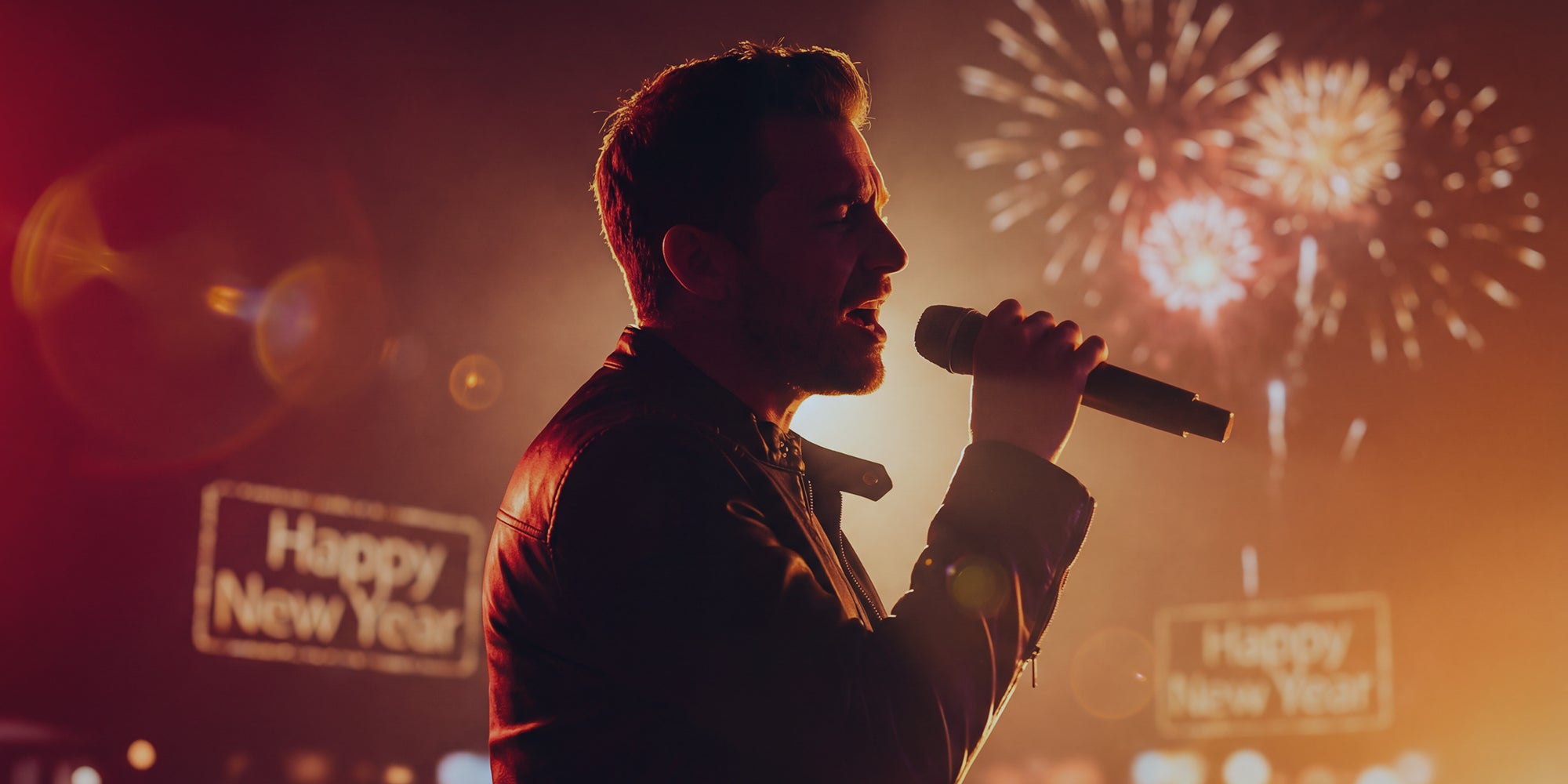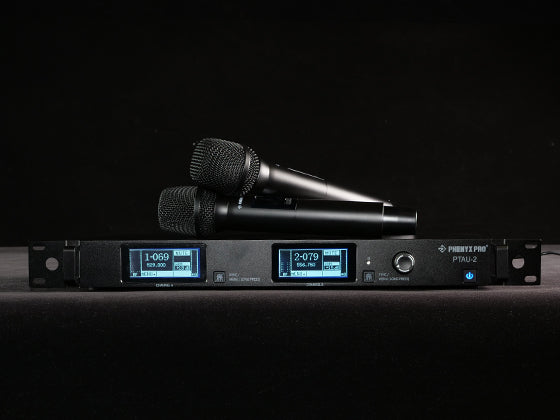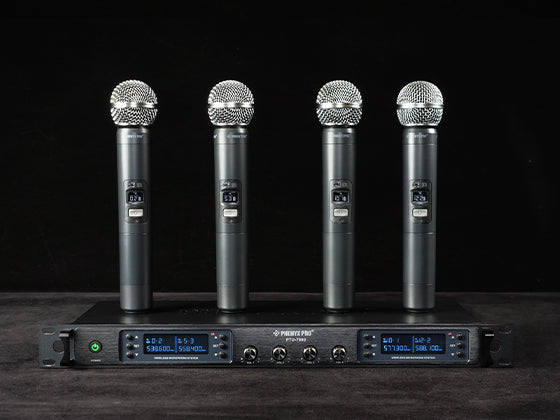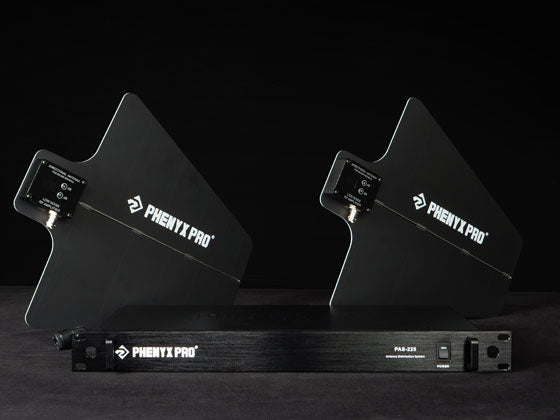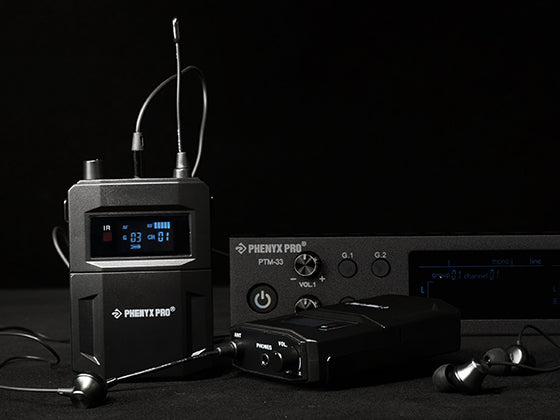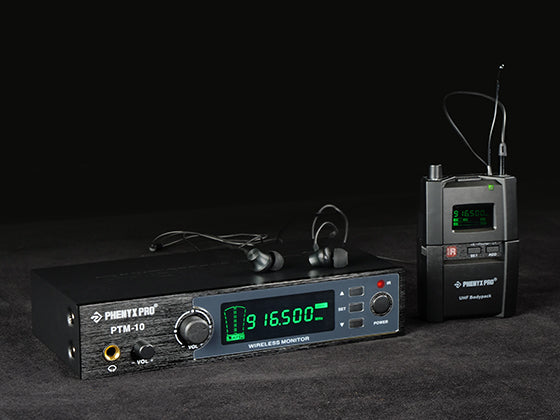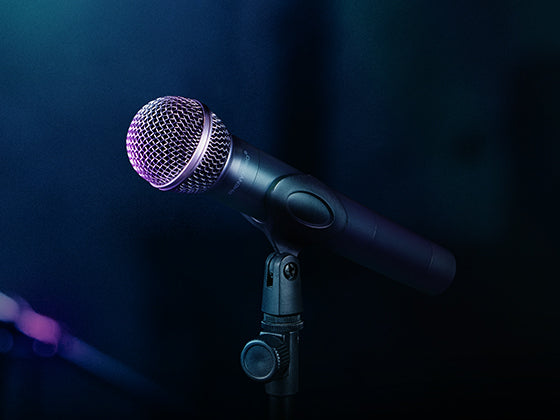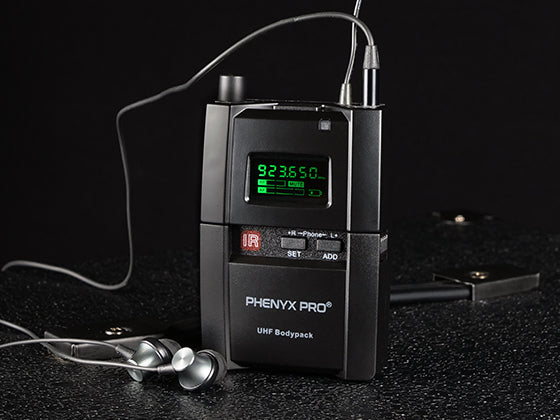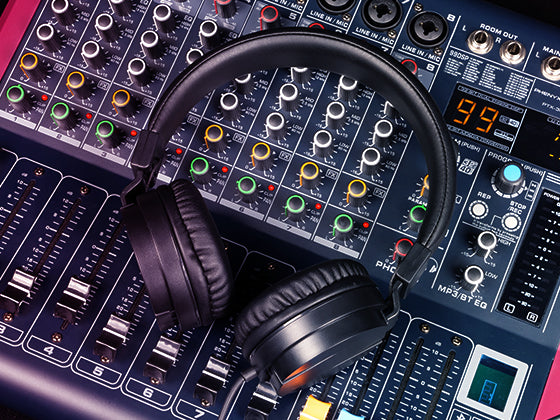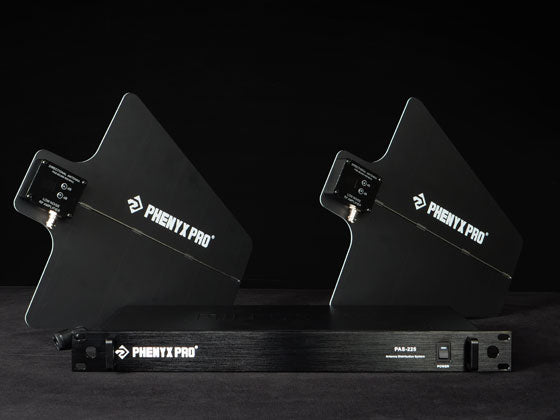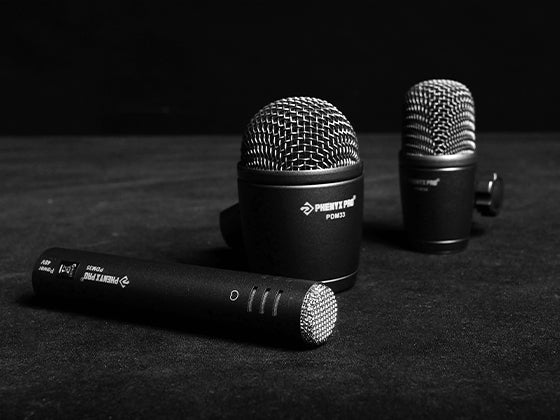Story of the Month:
Insights from Thom Restivo
Gain insights from Thom Restivo, a seasoned sound engineer with over 20 years of experience in live audio. This interview reveals his approach to sound design, his solutions for tackling venue-specific challenges, and how he utilizes Phenyx Pro products to ensure smooth performances.

At Phenyx Pro, we strive to be more than just a brand—we aim to be a source of inspiration and innovation for those who are passionate about sound and music. Through our “Spotlight Story” series, we bring together diverse voices from the world of music, from bands and recording studios to live sound engineers. Our goal is to showcase the innovative ways they use Phenyx Pro products to overcome challenges, refine their craft, and deliver unforgettable performances. By sharing these real-world experiences, we hope to foster learning, build trust, and spark creativity within our community.
In this edition, we connect with Thom Restivo, a seasoned sound designer and engineer with over 20 years of experience in live audio. Thom's journey has taken him from community theaters to schools and churches, where he uses Phenyx Pro gear to mic up performers and manage sound for both live orchestras and tracks. In this interview, Thom opens up about his methods for tackling venue-specific challenges, his philosophy on creating seamless performances, and how Phenyx Pro products have become indispensable tools in his audio toolkit. Join us as we explore Thom’s insights and discover what it takes to ensure flawless sound across diverse settings.
Q1: What initially sparked your interest in sound design and engineering? Did your approach evolved over the past 20 years?
In the beginning (late 90’s), my involvement in theatre was limited to assisting the local audio engineer by capturing the sound for analysis and archiving. When the engineer took a job on a cruise ship, I stepped in to fill a void and never looked back. I had been creating and producing music in my home studio so I was already familiar with the hardware, mixers, and mics and such. The local theatre had a small budget and very little hardware for running shows so I began bringing in my own gear to complement their system. At first I limited my vocal input to the production staff, but as time went on I began offering suggestions that I thought would enhance the quality of the show from a sound guy’s perspective. And just like that, 25 years and over 1,200 shows have passed.…

Q2: Given the variety of musicals you’ve worked on, how do you adapt your sound design to fit the unique atmosphere of each show?
Designing a soundscape for each show depends on a few factors. Is there a live orchestra? Are you running music tracks that must be strictly adhered to? Is it a kids' show or adult oriented? Also, is it a themed show performed at a specific time of year, such as a light-hearted Christmas show, or an eerie Halloween production? Typically, I would select pre-show music accordingly. Occasionally, I would have to create scene change music to fill in the quiet spots.
Q3: How do you collaborate with directors and performers to ensure that the sound design enhances the storytelling of a musical?
I was lucky enough to work with directors that were confident in my expertise, and they generally left me to perform my task with minimal interaction. This allowed the director to concentrate on other things, like blocking, line delivery and lighting. Same goes for the performers. For musicals a lot of performers have to wear wireless mics so that they can be heard above the music. They understand this, so they keep the gripes to a minimum. During “tech week” minor tweaks are implemented to make the show the best it can be.
Q4: With over 1200 performances under your belt, do you encounter different challenges or prepare differently for various venues like community theaters, churches, and schools?
There are unique challenges with each show. Scanning the venue is a must to keep interference and feedback from ruining the performance. Each location has different acoustic challenges as well, whether it’s a 500 seat community theatre or an elementary school cafetorium. Some venues, churches, for instance, are not really designed for putting on shows but are increasingly being used due to the large seating area and a typical sound booth used for amplifying the preacher and the choir. Another factor is the temperature and humidity inside the venue. It’s not a huge problem unless there is a big change in the atmosphere, like here in Florida!


Q5: What Phenyx Pro products are you currently using and what products do you expect to try out?
In my earlier years, I was using wireless mics in the 600MHz range. When the FCC restricted those bands I was forced to replace my gear with mics that were in the legal spectrum. ENTER PHENYX PRO! I currently have over 50 wireless bodypacks, mostly the PTU-7000 series and 10 handhelds. I have run as many as 24 bodypacks at one time, which is doable with careful frequency selection. I rent complete systems to local schools, which typically include 16 mics and 2 PAS-225X systems encased in two road cases with one set of paddles. I’m looking forward to incorporating the PTAU-2 series with true diversity for the main characters. I am also using the PTM-10 system to control stage monitors without having to run long XLR cables. For large shows, I’m using an Allen & Heath QU24 mixer, but now that the new Phenyx Pro mixers have added mute buttons I’d like to try them out on shows that require fewer mics. Phenyx Pro has made my tasks a lot easier, and I’m extremely happy with their products, not to mention their customer support is always willing to listen and help out whenever possible.

Q6: You mentioned using a lot of our products in theater settings and that you've run 24 bodypacks simultaneously. What kind of event was that? Did you experience any dropouts or interference issues while running that many at once? Did it take a lot of time to find frequencies that wouldn't interfere with each other, and did the auto scan feature help during that process?
I’ve attached a short video taken during the production of Music Man Jr. In this clip, I am utilizing 22 wireless mics (PTU-7000 series) and 2 IEM receivers on the stage monitors. No dropouts, no interference (see video). The setup process takes a couple of hours, which includes qualifying the results of the Auto Scan.

Q7: Could you share what equipment you use for scanning, or any tips and tricks you have for avoiding interference or dropouts during a performance?
For this production, After running the autoscan feature of the PTU-7000 receivers I qualify the frequencies by inserting them into a program called RFGuru2. I use this program to check for intermodulation problems. If any of the frequencies fail, I use the program to “tweak” them until I have all the bodypacks passing the test. At the venue, I run a group number during tech week and I monitor the PTU-7000 receivers for any dropouts or interference. The only problem I sometimes encounter is combing when two performers are singing close together. To remedy this, I just switch the polarity of one mics on the mixer, or sometimes I just pull back the fader on one of the mics.
Q8: What do you find to be the most rewarding moment or aspect of being a sound engineer?
The most rewarding moment of each performance is during bows. The entire cast, after taking their individual bows, will point to the sound booth with a silent “thank you”. Also, as the patrons file past the booth while leaving, some of them will comment on how well they could hear the performers (usually their kids) during the musical numbers.
Q9: Is there a piece of advice you would give to someone just starting out in sound design or engineering for live performances?
For those starting out, I offer the following, not as advice but as things to consider. First of all, when it comes time to do “mic checks” take control of the entire house, be firm and dominant in quieting the house, they must all respect this request in order for you to do your job. During the first couple of times running mic checks, take all the time you need on each individual until you are happy with the results. Sometimes, this requires your stage manager to move the location of the mic on the person you are checking. Make sure the director knows this will take some time in the beginning, but future checks will run faster after this initial setup. Make sure the performer is speaking in their “stage voice”. Young performers are reluctant to speak out during their time, so always give positive reassurance to gain their confidence. Ask your director to run a large group number. This lifts their spirits and gives you the chance to adjust your faders for balance with the music. Take notes during tech week and during breaks or after rehearsal make sure to address the issues. Always use new batteries for each real performance! Save the used batteries for future tech week runs. Use mic bags when possible to keep the actors hands off the pack. Make sure the stage manager has spare batteries and mic elements and knows how to use them. Don’t panic if the RF indicator goes out while the performers are in the green room, this depends on how far the green room is from the booth. I almost always use the antenna paddles to give me the best reception possible. Creating cues in your copy of the script is paramount and helps you keep focused (I actually color code my music track cues different from my actors cues). And one more thing to remember… a second feels like a minute when something goes wrong, don’t panic, stay focused and don’t lose your place. If you get butterflies in your stomach just before opening night, that’s a good thing! After 1200 shows I still get them.

Final Thoughts
Our conversation with Thom Restivo offered a window into the qualities that define his excellence as a sound engineer—his meticulous attention to detail, relentless dedication to his craft, and his remarkable ability to adapt and innovate under any circumstance. Thom’s journey is a testament to the power of perseverance and passion in the ever-evolving world of live audio. His insights serve as a valuable reminder of the endless possibilities that arise when skill meets the right tools. We are grateful that Phenyx Pro products have been part of his journey, empowering him to bring out the best in every performance.
Reflecting on this dialogue, we are inspired to continue pushing the boundaries of audio innovation. At Phenyx Pro, we remain committed to listening to our community, learning from their experiences, and delivering products that elevate their craft. Stay tuned for more stories from our incredible users, as we continue to explore and celebrate the art of sound together.
